Roop was one of Nevada’s original nine counties. Boundary disputes led to confusion about whether Susanville and Honey Lake were in California or Nevada. Tensions ran high and erupted in what might be one of the shortest wars ever, the four-Hour Sagebrush War.

Early history of the northeastern Sierra

Fur trappers first explored the northern edge of the eastern Sierra in the 1830s. They primarily hunted beaver and muskrat and sold the pelt to companies including the Hudson Bay, American Fur and Rocky Mountain Fur Companies.

(Photo credit: Wikipedia)
In the 1840’s John Fremont and his expedition followed the trapper trails, exploring and documenting the Sierra. The Gold Rush started in 1849, and soon, emigrants searched for the quickest route to reach the gold fields of California. William Nobles created a new route over the Sierra in early 1852. Nobles Trail was one of the earliest emigrant routes and heavily traveled.
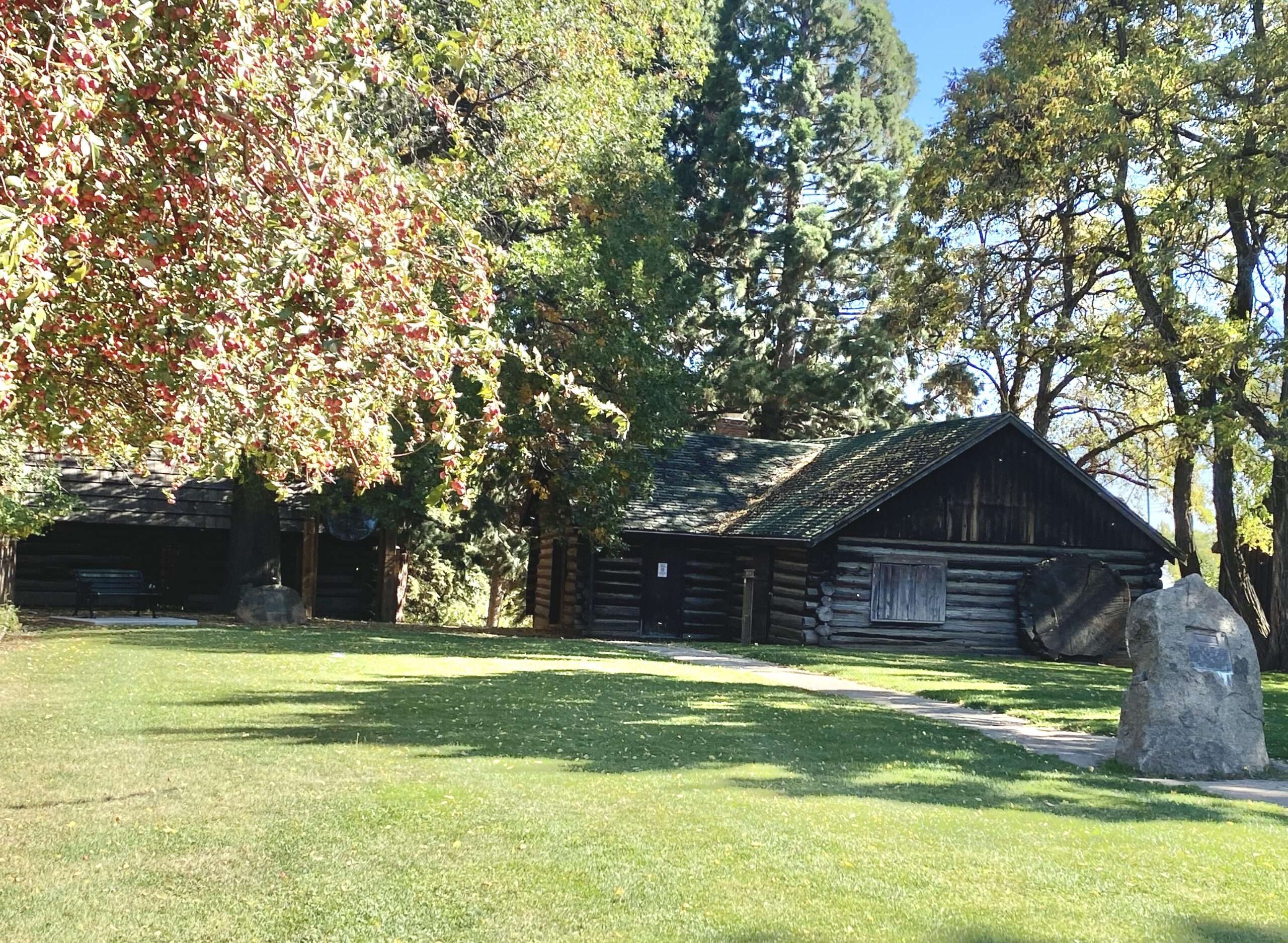
Isaac Roop established a trading post at the northwest end of Honey Lake, along the Nobles Emigrant Trail. A small settlement of Rooptown formed, but they changed the name to Susanville in honor of Roop’s daughter. Following the discovery of gold in the eastern Sierra, other small settlements developed around the valley.

(Map credit: BLM)
The State of California
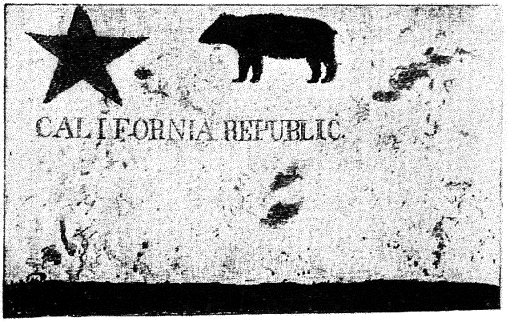
(Photo credit: Museum of the City of San Fransisco)
In 1850, the US Congress created the state of California. They deemed that the eastern border was the 120th median. As no survey of the 120th median had been conducted, many assumed the Sierra’s crest was the California border.

(Map credit Wikipedia)
Susanville claimed they were not part of California but a part of a new “Territory of Nataqua.” Interestingly, their proposed plan for Nataqua was based on latitude and longitude, and Susanville was outside that boundary.
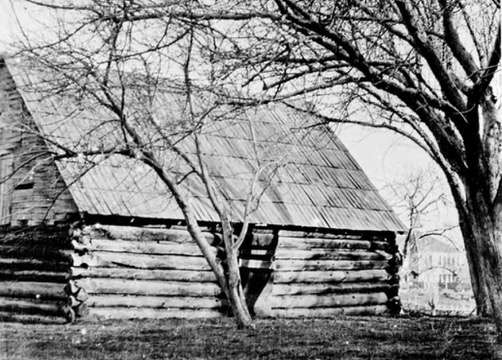
(Photo credit: Library of Congress)
Susanville joined Eagle and Carson Valleys to separate themselves from California and Utah. Isaac Roop and Peter Lassen headed the movement. In 1859, they declared independence from California and Utah. Roop was elected the Provisional Territorial Governor of Nevada and took his oath of office on December 13, 1859.
The Nevada Territory
Congress created the Nevada Territory in 1861. Lake County was created, encompassing Susanville and the Nataqua Territory. The county was renamed Roop in 1862, making it one of Nevada’s first nine counties.
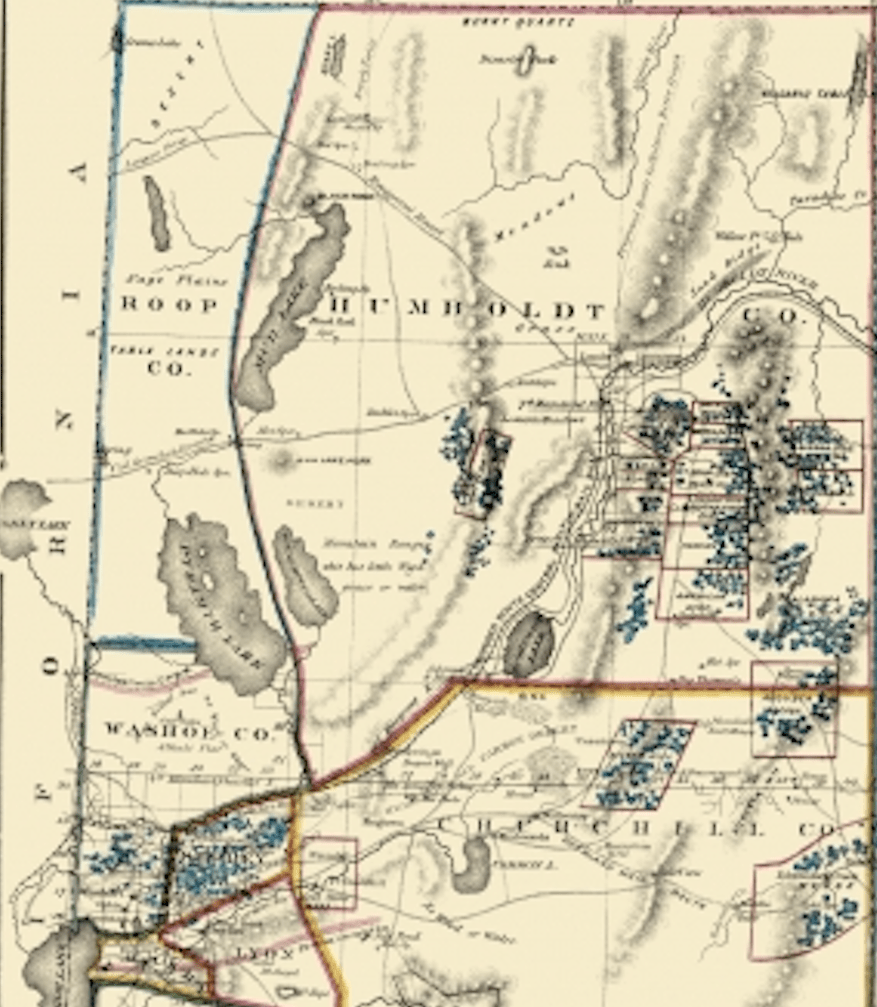
(Credit: Maps of the Past )
Sagebrush War
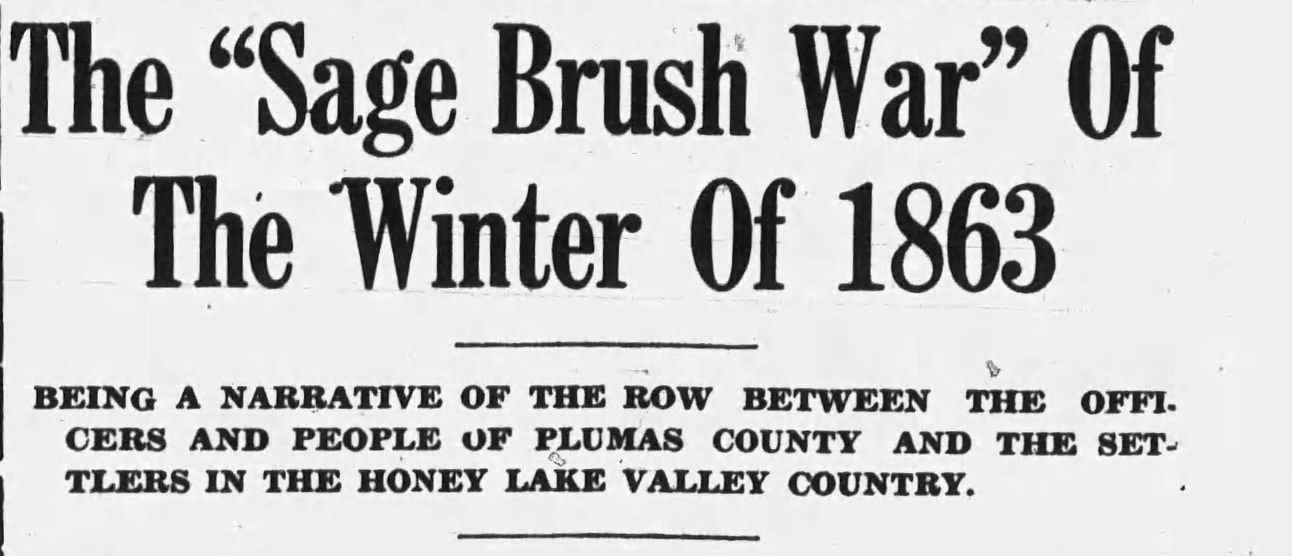
The uncertainty over the California border created confusion in Susanville. Two states, judges, and law enforcement officers tried to regulate the disputed territory and collect taxes.

(Photo credit: Roop’s Fort)
Roop County’s judge issued an injunction against the Plumas County judge to prevent him from performing his official duties. In retaliation, the Plumas Judge ordered the arrest of Roop County Sheriffs.
In February of 1863, Plumas County tax collectors arrived in Susanville, but residents refused to pay money to California. Plumas County and Honey Lake Residents “parlayed under a white flag,” but they could not resolve the boundary dispute.

Plumas County Sheriff E.H. Pierce and his forces crossed the snow-covered Sierra and headed for Susanville. Meanwhile, Roop and his men fortified themselves at the old log cabin known as Roop’s Fort or Fort Defiance.
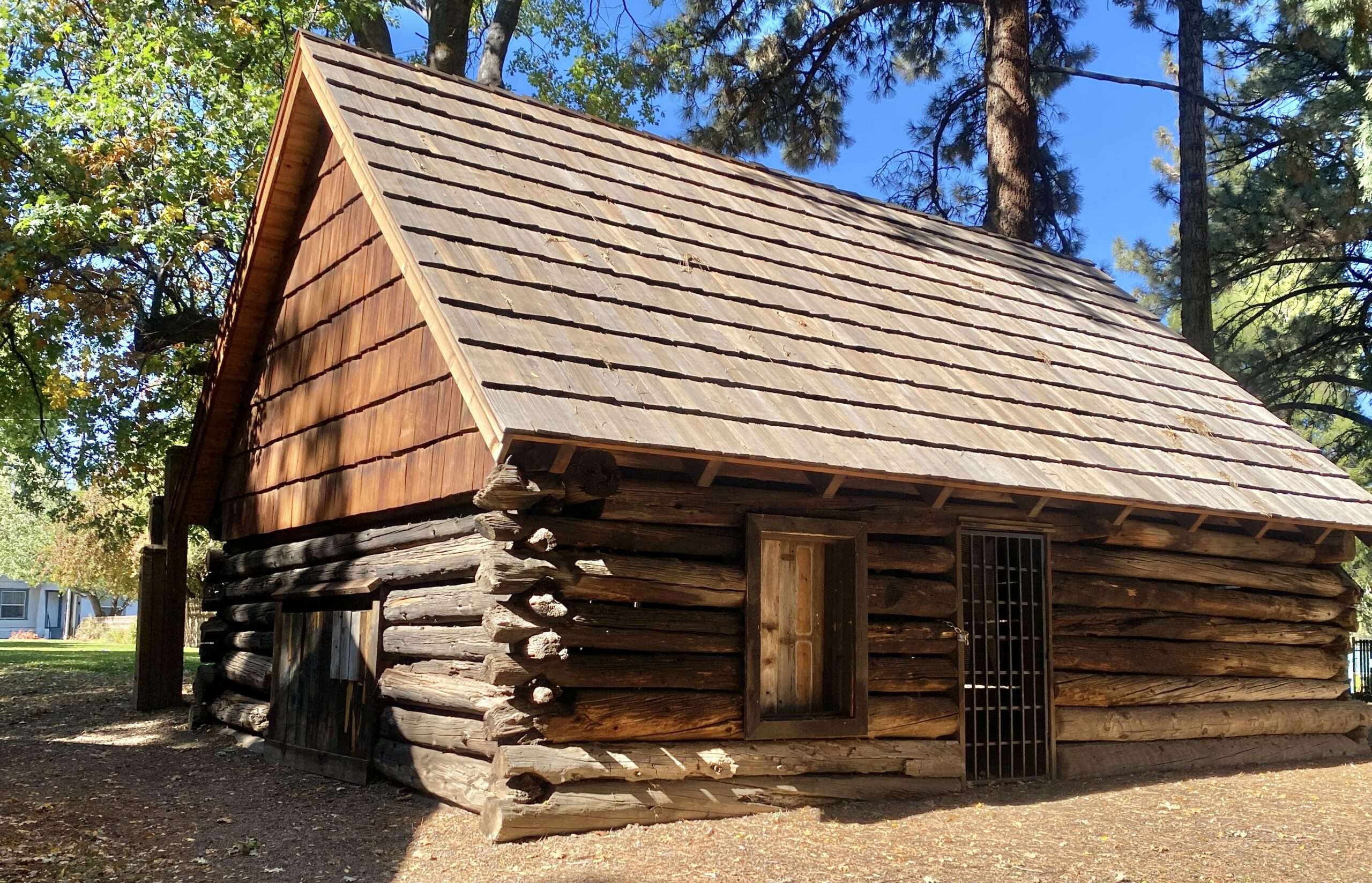
What happened next may be one of the shortest wars ever. On February 15, 1863, for four hours, each side sent a volley of shots in the direction of the opposition. Only three men were slightly wounded. Witnesses say it was evident neither side was trying to harm the other.
The Honey Lakers fired at the barn and and the Plumas men fired at the fort. Both sides were well protected. It was evident that the men on either side did not want to inflict injury.
Indian Valley Record, March 2, 1939
During the war, everyday life in Susanville continued. Spectators arrived to “watch the fun.” Supporters of both sides gathered at the hotel for a meal, with no hostilities.

(Photo credit: Exploring Lassen Counties Past)
Four hours into the war, the sides agreed to a cease-fire. Three to four hours later, they extended the cease-fire until the next day. The following day, they agreed that two members of each side would present their cases to the governors of California and Nevada. They sent a message to the governors reporting a…
State of war existed between the authorities of Plumas County, California and the authorities and citizens of Roop County, Nevada Territory.
Survey of 1863
In 1863, a survey found much of Roop County was actually in California. The portion of Roop County to the west of the border became Lassen County, California, in 1864. The Nevada Territory portion of Roop County was small and had only a handful of residents. In 1864, the remaining Nevada portion of Roop County joined Washoe County, Nevada.
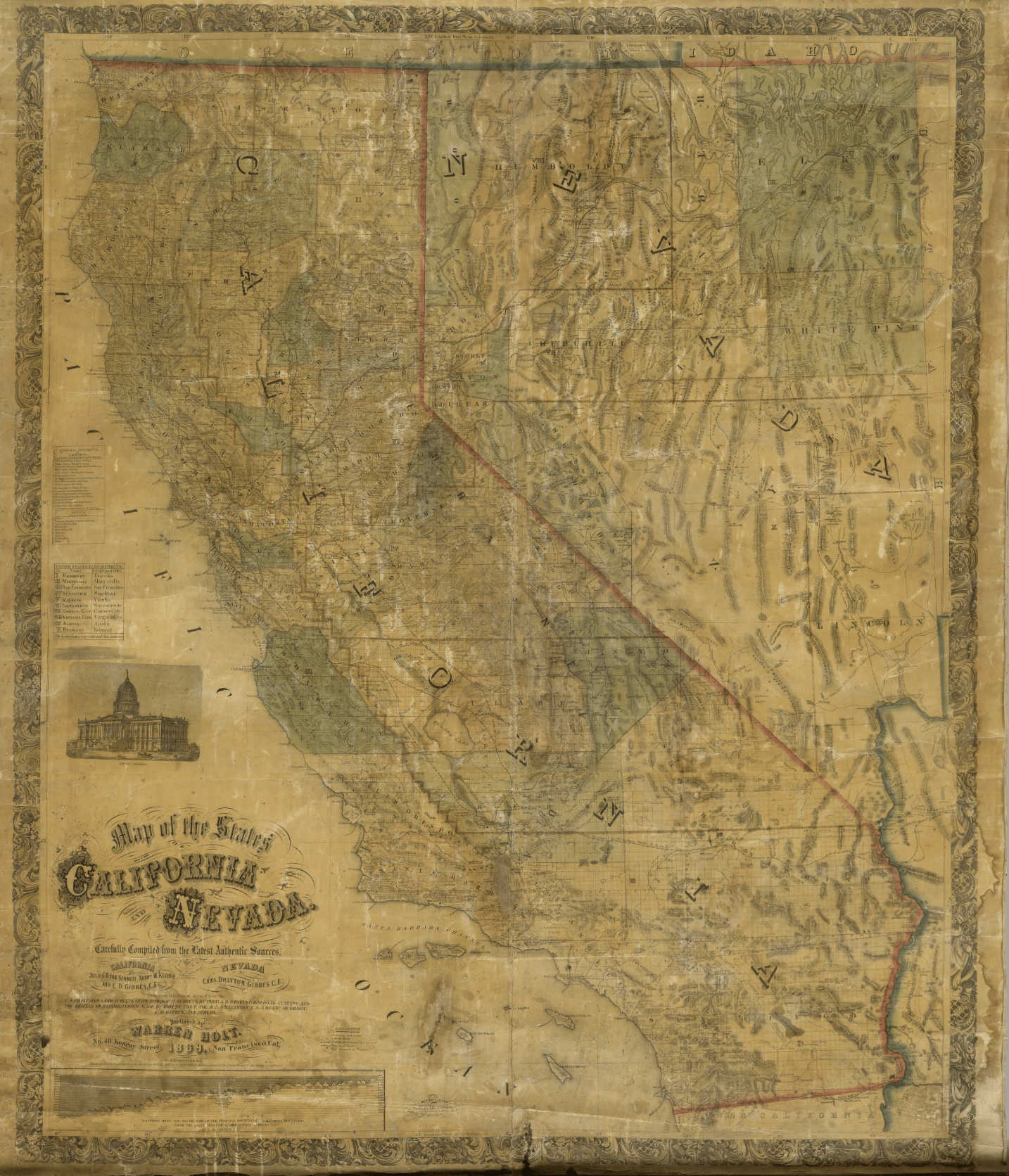
(Credit: David Rumsey Map Collection)
WANT MORE GHOST TOWNS?
For information on more than five hundred ghost towns in Nevada & California, visit the Nevada Ghost Towns Map or a list of Nevada ghost towns.
Learn about how to visit ghost towns safely.

References
Follow me on social media:
Irv Stark says
Tami… ya did it again! Provided the information on little known Roop County and the four hour war. Probably something I would never have learned if not for your posting….Very interesting part of Nevada history! Thanks again.
Tami says
Ahhhhh, thank you!
Dudley Dufort says
Tami, that’s a good one!! Thanks
Tami says
Thank you. This was a fun one to research and write.
Greg says
Now this is interesting and rrsearched. Thank you
Tami says
Thanks.
Julianne Zamacona says
Thank you for the history lesson. Truly enjoyed this.
Tami says
Welcome, glad you enjoyed the article.